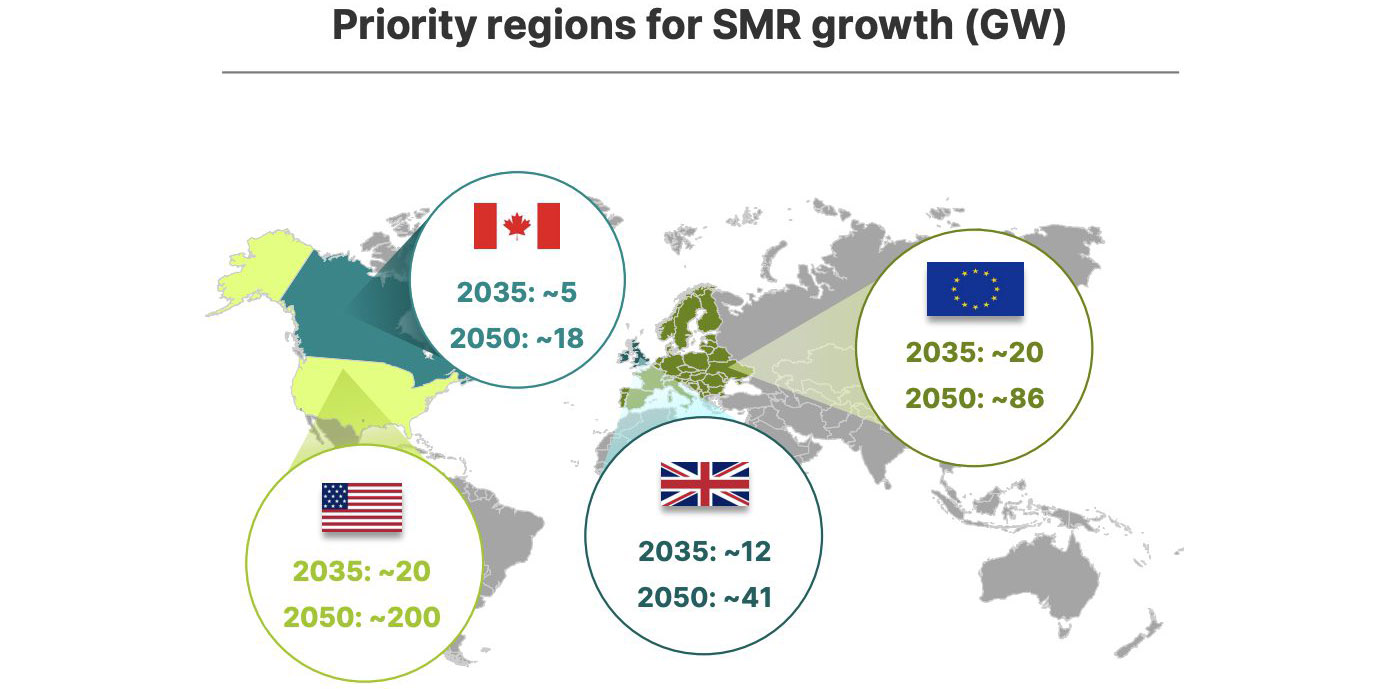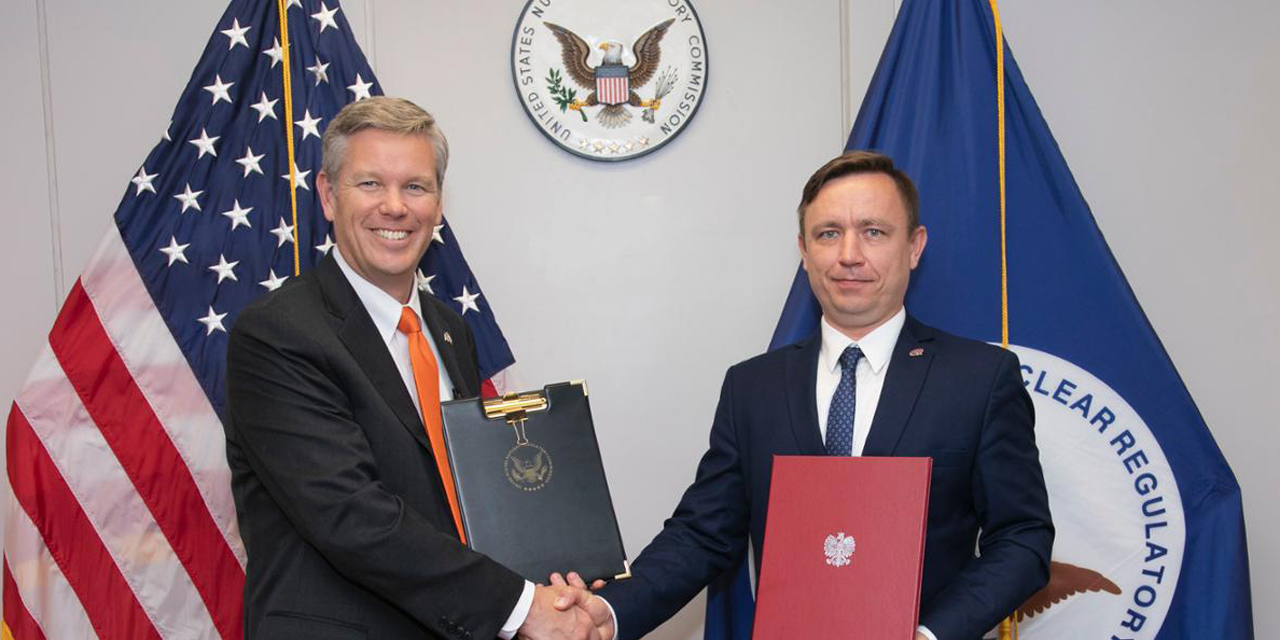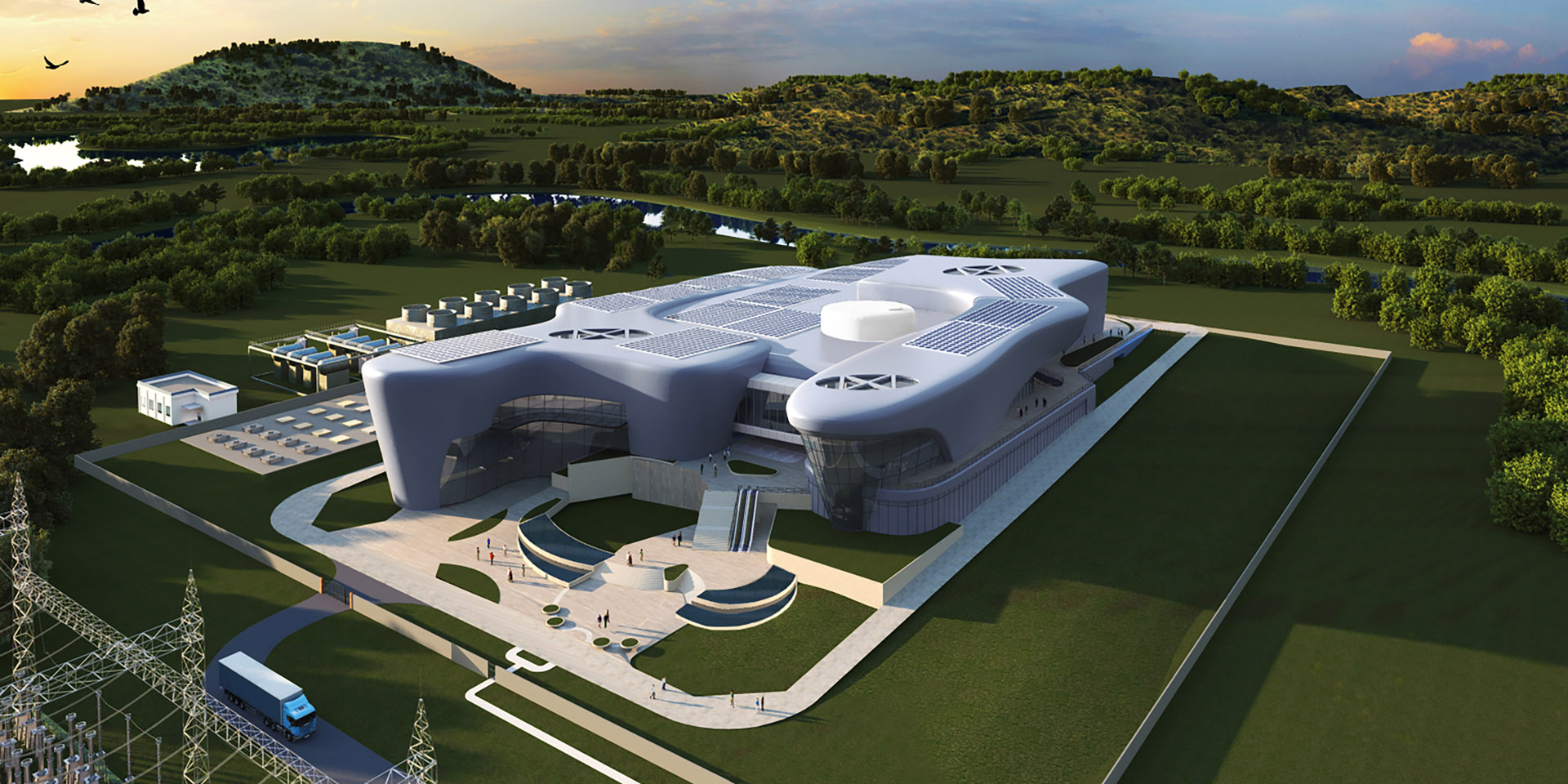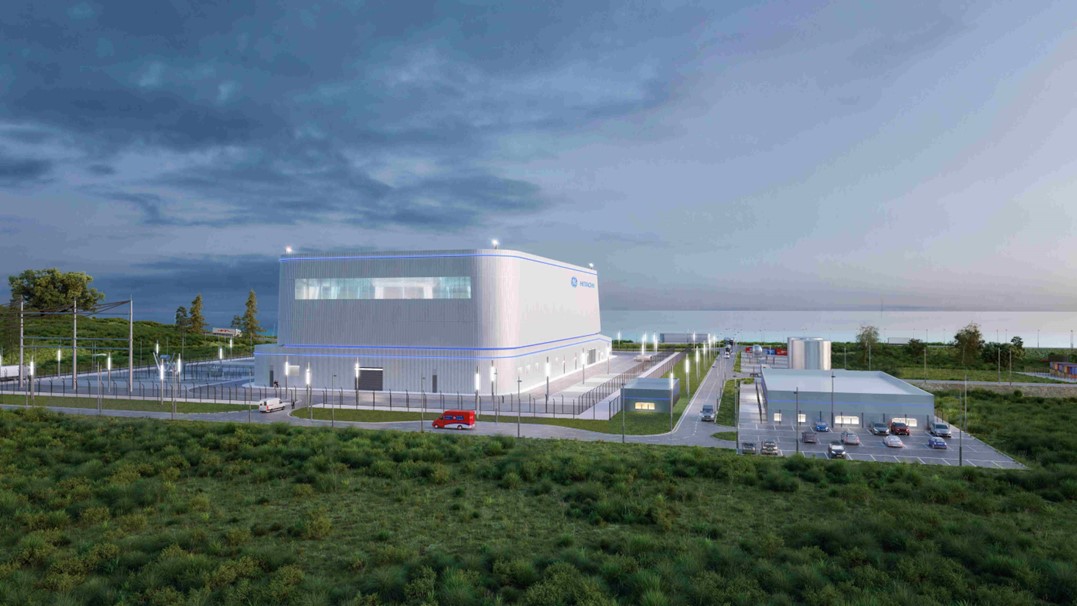GE Vernova’s priority regions for SMR growth, with projected gigawatt demands in 2035 and 2050 for the United States, Canada, the United Kingdom, and European Union. (Source: GE Vernova)
GE Hitachi Nuclear Energy (GEH)—the nuclear business unit of Massachusetts-based GE Vernova in partnership with Japan’s Hitachi—has announced that it is forming a group of qualified supply chain companies to advance the manufacture, commercialization, and international deployment of its BWRX-300 small modular reactor. The company stated that it is forming the group to help ensure “a reliable, cost-effective and innovative” process for getting its SMR commercialized and deployed around the world.
Representatives of OPG and its partners announced new contracts at the World Nuclear Exhibition in Paris. (Photo: X/@urencoglobal)
At the World Nuclear Exhibition in Paris this week, Ontario Power Generation announced contracts with Canadian, French, and U.S. companies to ensure a fuel supply for the first of four GE Hitachi Nuclear Energy BWRX-300 small modular reactors planned for deployment at OPG’s Darlington nuclear power plant.
A cutaway image of the BWRX-300. (Image: GE Hitachi Nuclear Energy)
The Canadian government continued advancing its small modular reactor action plan on Saturday with the approval of up to C$74 million (about $54.6 million) in federal funds for SMR development in Saskatchewan, led by the province’s main electricity provider, SaskPower.
Marking the NRC’s acceptance of NuScale’s standard design approval application for formal review are, left to right, Getachew Tesfaye, NRC senior project manager; Robert Gamble, NuScale vice president of engineering; Brian Smith, NRC director of the Division of New and Renewed Licenses; Carrie Fosaaen, NuScale vice president of regulatory affairs; Karin Feldman, NuScale vice president of the program management office; Robert Taylor, NRC deputy office director for new reactors; and Mark Shaver, NuScale director of regulatory affairs. (Photo: NuScale)
The Nuclear Regulatory Commission has accepted for formal review NuScale Power’s standard design approval (SDA) application for its updated small modular reactor design, the Portland, Ore.–based firm announced yesterday.
From left, NRC chair Christopher Hanson and PAA president Andrzej Głowacki sign a cooperation agreement in Washington, D.C. (Photo: PAA)
The Nuclear Regulatory Commission and Poland’s National Atomic Energy Agency (PAA) have renewed their cooperation agreement for the next five years.
A technical collaboration agreement was signed by (seated from left) Jay Wileman, GEH; Jeff Lyash, TVA; Ken Hartwick, OPG; and Rafał Kasprów, SGE; and was observed by dignitaries and an audience both in-person and online. (Photo: TVA)
“I’m glad you came to our party!” said GE Hitachi Nuclear Energy (GEH) chief nuclear officer Nicole Holmes as she prepared to announce that Wilmington, N.C.–based GEH will develop a standard design for its BWRX-300 boiling water small modular reactor with not one but three power producers representing three countries: Tennessee Valley Authority (TVA), Ontario Power Generation (OPG), and Synthos Green Energy (SGE). Celebration was a theme throughout the March 23 event held in Washington, D.C., which was flush with dignitaries representing the United States, Canada, and Poland.
A rendering of Holtec’s SMR-160 plant. (Image: Holtec International)
Small modular reactor developers Holtec International and GE Hitachi Nuclear Energy (GEH) are both looking to the United Kingdom as a prime location for deployment of their units—the SMR-160 and BWRX-300, respectively.
On December 19, Holtec Britain announced that it is poised to enter the United Kingdom’s generic design assessment (GDA) process for the SMR-160 early in 2023, enabling the start of construction of the first U.K. unit as soon as 2028. (The GDA, developed by the Office for Nuclear Regulation and the Environment Agency, gauges the safety, security, and environmental protection aspects of a nuclear plant design. Successfully completing the assessment culminates in a design acceptance confirmation from ONR and a statement of design acceptability from the Environment Agency.)
Artist’s rendering of a BWRX-300 plant. (Image: GE Hitachi Nuclear Energy)
Canada Infrastructure Bank (CIB) has finalized an agreement with Ontario Power Generation, committing C$970 million (about $715 million) to Canada’s first small modular reactor, to be located at OPG’s Darlington nuclear power plant in Clarington, Ontario.
A state-owned enterprise founded in 2017, CIB is charged with financially supporting revenue-generating infrastructure projects in the public interest via public-private partnerships. The agreement with OPG is the bank’s largest investment in clean power to date, according to a Tuesday joint announcement.
Natrium Fuel Facility groundbreaking. (Photo: GNF-A)
Global Nuclear Fuel–Americas (GNF-A) and TerraPower announced their plans to build a Natrium fuel fabrication facility next to GNF-A’s existing fuel plant near Wilmington, N.C, on October 21. While more than 50 years of fuel fabrication at the site have supported the boiling water reactor designs of GE (GNF-A’s majority owner) and GE Hitachi Nuclear Energy (GEH), the Natrium Fuel Facility will produce metallic high-assay low-enriched uranium (HALEU) fuel for the sodium fast reactor—Natrium—that TerraPower is developing with GEH.
The Estevan region (Image: SaskPower)
As part of its planning and regulatory activities to potentially build small modular reactors (SMRs) in currently nuclear-powerless Saskatchewan, Canadian utility SaskPower has selected the province’s Estevan and Elbow regions for further study. (In 2018, SaskPower joined the Canadian government, three other provinces, and four other Canadian utilities to participate in the development of A Call to Action: A Canadian Roadmap for Small Modular Reactors.)
Panelists (from left) Adam Stein, Jon Ball, Mike Laufer, and Michl Binderbauer during the Breaking Through: Assessing the Current State and Prospects of Nuclear Innovation in the Race to Decarbonize session at the ANS Annual Meeting.
If nuclear innovators are in a race to decarbonize, it is a race with one finish line—affordable, clean, and reliable power—and many ways to get there. Over 40 fission developers and 20 fusion developers are in the running, and while attendees of the June 13 ANS Annual Meeting executive session on Breaking Through: Assessing the Current State and Prospects of Nuclear Innovation in the Race to Decarbonize heard from representatives of just three of those companies, they presented very different designs and deployment approaches, aptly reflecting the broader diversity of nuclear power innovation.
Session chair Adam Stein, director of nuclear energy innovation at the Breakthrough Institute, welcomed representatives from an advanced non–light water reactor developer (Mike Laufer, Kairos Power), a small modular light water reactor developer (Jon Ball, GE Hitachi Nuclear Energy), and a fusion power developer (Michl Binderbauer, TAE Technologies). Together they explored the challenge of engineering a significant commercial scale-up of advanced nuclear technology by the end of the decade, tackling questions of cost, schedule, supply chain, regulation, and more.













